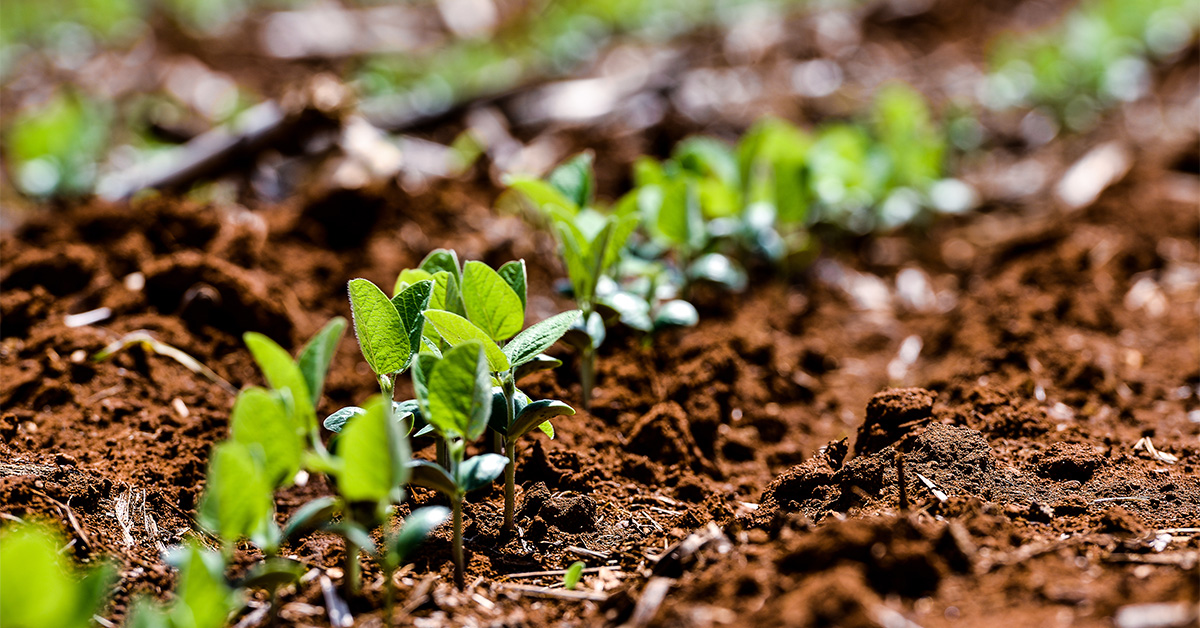Early Season Weed Control with Pre-emergence Herbicides

Get Ahead: Make Your Pre-Emergence Herbicide Work for You
One of the greatest gambles one takes in farming is trying to predict Mother Nature. While you can do your best to control the things you can, weather can topple the best laid plans. When storms and wet weather delay your ability to get soybeans planted or a streak of dry weather doesn’t allow your pre-emergence herbicide to activate, it can seriously impact your weed control plans for the season. That can translate to additional stressors on your time and costs to compensate for a Plan B.
Whether it be due to weather or life in general, even hitting your optimal planting date can sometimes be challenging. The University of Nebraska reports that for each day soybean planting was delayed after May 1, the yield penalty was as much as 0.63 bushels per acre in a great soybean year.1
Similarly, controlling weeds early is critical to setting up your soybeans for success throughout the season. Early season weed control mitigates yield loss due to weed competition, provides a longer window for soybeans to establish and reduces pressure on post-emergence herbicide applications to control larger weeds later in the season2.
When it comes to your pre-emergence herbicide application, anything you can do to add flexibility helps you be prepared for a stronger start to the season, and your crop’s best chance for success all season long. Zidua® PRO residual herbicide from BASF provides faster burndown, offers a zero-day planting interval and does not break down due to sunlight as quickly as competitors3,4,5, allowing you to better navigate the unexpected with confidence.
Be Prepared for the Unexpected
Tough weeds like Palmer amaranth and waterhemp can drastically reduce yield potential by competing for vital, early season resources. Uncontrolled weeds can also contribute to the weed seed bank, increasing weed populations for future seasons. For instance, Palmer amaranth can grow up to 2.5 inches per day, produce up to 600,000 seeds and reduce yields by as much as 79 percent if left uncontrolled.6 Given their propensity for herbicide resistance, it’s even more important to make sure to start clean and mitigate resistance as much as possible.
“We have all been in those situations where weather doesn’t want to cooperate, or even our own busy schedules get in the way of doing everything the way we planned,” said Eric Eade, BASF product manager. “That’s why the flexibility of Zidua PRO herbicide is such an advantage. It offers up to three to five times faster burndown than 2,4-D ester or glyphosate alone7 on tough broadleaf weeds so you can plant sooner after burndown applications and take advantage of windows of good weather.” Zidua PRO herbicide also has a zero-day plant back restriction, which means you can often plant and spray in the same day.
Early Season Confidence
“Zidua PRO herbicide is also a great choice to ease uncertainty around timely rains needed to activate the herbicide,” said Eade. “It better resists breaking down due to sunlight exposure, which means it stays in the soil ready to activate, whereas competitors might break down before you get the protection you need.”3,4,5
With resilient weeds like Palmer amaranth and waterhemp competing with your soybeans, resistance management becomes a key consideration for your weed control program. Luckily, the three sites of action in Zidua PRO herbicide work in concert with each other to provide overlapping weed protection.
Regardless of what life – or Mother Nature – throws at you this spring, feel confident that you’re prepared to give your soybeans their best chance of success by including Zidua PRO herbicide. The flexibility combined with proven performance, three sites of action for built-in resistance management and long-lasting residual provides a level of peace of mind that is hard to beat.
1 Spect , J.E., G.L. Zoubek , B.S. VanDeWalle , D.L. Varner. 2012. Soybean planting date - When and why. University of Nebraska Extension Publication EC145. Website: https://extensionpublications.unl.edu/assets/pdf/ec145.pdf (last accessed March 10, 2022)
2 Pre-emergence Residual Herbicides are the Foundation of Soybean Weed Control. University of Nebraska. https://cropwatch.unl.edu/2018/pre-emergence-residual-herbicides-are-foundation-soybean-weed-control. Januray 31, 2022.
3 Dimou et al. 2002 https://www.tandfonline.com/doi/abs/10.1080/0306731031000149660
4 Shaner, D.L. (2014) Herbicide Handbook. 10th Edition, Weed Science Society of America, Champaign, 513 p.
5 Health Canada Pest Management Regulatory Agency, 2012. Proposed Registration Decision,Pyroxasulfone,PRD2012-20. http://www.publications.gc.ca/collections/collection_2012/sc-hc/H113-9-2012-20-eng.pdf
6 Palmer amaranth management in Soybeans. United Soybean Board. https://weedscience.missouri.edu/publications/50737_FINAL_FactSheet_PalmerAmaranth.pdf. 2013.
7 BASF Trials
© 2022 BASF Corporation. All rights reserved. Zidua® PRO herbicide is a registered trademark of BASF. Always read and follow label directions.